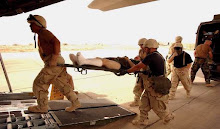By Steve Hammons
Recent news stories have carried accounts of two legally blind American golfers hitting holes-in-one. And a legally blind woman in the UK made a “Robin Hood shot” at her archery range, splitting her first arrow already in the target with her second shot.
These kinds of incidents may seem like miracles or dumb luck.
Or, maybe they are examples of what researchers in human perception call “anomalous cognition” or “remote viewing.” Another term is “extrasensory perception” or “ESP.”
These are concepts, well-researched and documented by researchers, that try to give names to the human abilities of accurately perceiving aspects of situations around us using our internal instincts, intuition, gut feelings, hunches, visualization, situational awareness and other similar methods.
The U.S. Government’s Project STAR GATE of the 1970s, ‘80s and ‘90s found that military and intelligence personnel could learn to perceive information about situations not available to them through their normal five senses of sight, hearing, touch, taste or smell.
They could perceive faraway places, events and other information internally.
We probably see amazing examples of this all around us. But do we recognize these unconventional occurances within others and within ourselves?
HOLES-IN-ONE, “ROBIN HOOD SHOT”
For example, an April 11 news report by the Associated Press told the story of the 85-year-old legally blind golfer in Arizona who made a hole-in-one recently at a golf course in Green Valley, near Tucson.
Robert Dunham, a former World War II paratrooper in the Pacific, was at a golf course in an activity coordinated through a blind veterans rehabilitation program of the Veterans Affairs health care system in southern Arizona.
Dunham started losing his sight ten years ago and had only been in the VA golfing program for three weeks.
His hole-in-one shot amazed fellow veterans and the VA staff watching, as well as Dunham himself.
Green Valley News reporter Nick Prevenas wrote in an April 8 article that Dunham had played golf for nearly 30 years but Dunham “said last week's fateful shot was the first time he had come anywhere near a hole-in-one.”
And then there is the April 5 news story in the St. Petersburg Times, Florida, newspaper about 92-year-old legally blind Leo Fiyalko’s hole-in-one shot on Jan. 10.
Fiyalko said that it was his first shot of the day golfing with his “Twilighters” golf buddies. He said it was his first hole-in-one in 60 years of golfing.
The Times article noted that, “Fiyalko has learned something. He admitted to being a little reluctant to talk about the shot for the first few weeks. Now he knows it is inspirational, and he's embraced it.”
Yes, it is inspirational. And maybe it is something more. Maybe events like this are examples of human perception that is not dependent on sight or other senses of sound, touch, taste or smell.
A March 27 article in the UK newspaper The Telegraph reported that 74-year-old Tilly Trotter started archery two years ago after being encouraged by her granddaughter to try it. Trotter lost much of her sight 17 years ago after a head injury.
While at the archery range one day with her husband, the amazing “Robin Hood shot” surprised everyone present.
Trotter was quoted as saying, "The second arrow made such a noise going into the back of previous arrow I thought I had hit the ceiling or done some expensive damage. Then I heard people jumping up and down shouting that I'd done a Robin Hood. It was a one-in-a-million shot and a bit of a fluke really."
What do golfers Dunham, Fiyalko and archer Trotter have in common other than being legally blind, up in years and being involved in sports where the goal is hitting a small target with hand-held tool that launches a small projectile?
In all three cases, these individuals also had helpers nearby who generally pointed them toward the target, the golf green or archery bullseye, and gave them feedback on their shots.
How did this communication and sensory perception by the nearby friends, family or helpers who were able to see affect these apparently miraculous or very lucky shots?
CONTINUING RESEARCH
Maybe some researchers somewhere should take a look at these and other individuals. In decades of research on the phenomena of anomalous cognition and remote viewing, it has been clear that some people have natural abilities to perceive in ways other than, or in combination with our normal senses.
These abilities, however, are believed to be within each of us. We can learn to make the most of them by paying attention to them and learning more about these traits.
They are most likely also present in animals that rely more on instincts and natural kinds of perception than we humans who often depend on our logical, or illogical, brain and thinking.
We are also probably able to consciously or unconsciously optimize the use of these perceptual abilities based on the circumstances.
For example, when there is danger or survival may be at stake, we might naturally try to draw on all available resources within us, whether physical, mental, emotional, spiritual or even in the realm of unconventional, such as anomalous cognition, remote viewing and ESP.
If a loved one is in danger, we might get a particularly troubling gut feeling. If we meet a stranger and we feel danger, maybe we are perceiving a real threat.
People who have experienced dangerous situations in the past might have cultivated these abilities. Maybe other life experiences also enhance these human traits.
A military or intelligence “remote viewer” might get better results when they are working on something that is of crucial importance.
A peace officer on patrol may find that their “cop instincts” kick in when something important demands their attention.
Even a police or military canine might use dogs’ natural sensory and other perceptual resources in expanded ways in certain safety-related situations.
As part of declassified information about the Project STAR GATE research and operations, it is known that dolphins were reportedly tested in regard to anomalous cognition and remote viewing factors. This might make us wonder if the well-known sonar capabilities of dolphins and other marine mammals have similarities in us land animals.
The U.S. Navy has a very active Marine Mammal Program, based in San Diego, that works with and deploys Navy dolphins for various missions and operations. It is not clear from Project STAR GATE reports if that research involved Navy dolphins.
It is known that in certain martial arts, students are blindfolded and told to perceive their opponent through means other than their eyes.
In the 1977 movie "Star Wars," mentor Obi-Wan Kenobi blindfolds student Luke Skywalker while training with the light saber weapon and trying to hit a moving target darting around him. "Use the Force," Kenobi tells Luke, referring to a reality he believes is around us and within us. We can use the Force and it uses us, he tells Luke.
But whether we are talking about martial arts fighters, blind golfers and archers, dogs and dolphins or the rest of us, it is clear that we have the ability to perceive that not only includes our five senses, but also involves a "sixth sense" and maybe more.
How are these perceptions related to psychology, spirituality, biology, physics and some kind of animal or human radar or sonar?
And what really does “luck” and “coincidence” mean? Is there something more going on when certain circumstances come together in interesting and unusual ways?
Some researchers call this “synchronicity,” meaning that so-called coincidences may often be something much more.
As we explore these and other fascinating elements of our world, and inside each one of us, maybe we too will hit a hole-in-one in some way like Robert Dunham and Leo Fiyalko. Maybe each of us can make a “Robin Hood shot” of some kind in our own lives, like Tilly Trotter.
The old saying about our ability to perceive and understand is true about many things, including phenomena like anomalous cognition and remote viewing: “There are none so blind as those who will not see.”
skip to main |
skip to sidebar

In the past 30 days, readers from approximately 40 countries or territories using about 20 languages visited the Joint Recon Study Group site.

To see more articles, scroll down the right-side column.

Steve Hammons

Articles from the Joint Recon Study Group site and Transcendent TV & Media site are included.
The Joint Reconnaissance Study Group is the San Diego-based, combined-service/agency, research-and-activities team in my novels "Mission Into Light" and sequel "Light's Hand." This site contains information of interest to the JRSG.
Home page: Joint Recon Study Group site
Readers from around the world visit this site.

In the past 30 days, readers from approximately 40 countries or territories using about 20 languages visited the Joint Recon Study Group site.
April 2021 threat alert: ‘Force protection’ for our troops now the responsibility of all Americans
First responders must deal with society’s problems, shortcomings, injustices every day
Could some UFOs be linked to Native American 'white stone canoe' legends, stories?
Wildland firefighter basic training available at community colleges, tech schools, training centers
‘Boomer remover’ coronavirus is bigger threat to WWII generation that saved the world
‘Black swan’ events that aren’t: Coronavirus, climate emergency, unidentified aerial phenonema
Reagan’s complete 1987 UN message on ‘alien threat’ overlooked: Grave danger here, now
Was Reagan briefed about UFOs and original ‘Day the Earth Stood Still’ movie?
My military draft lottery number was #165 during final Vietnam War years
“Keep On The Sunny Side,” by The Whites, from movie O Brother, Where Art Thou?”
Living along Ohio River for centuries, Native Shawnee called it ‘Kiskepila Sepe’ – ‘Eagle River’
Native American words around us: States, towns, rivers, lakes, terrain, plants, animals, military
Athens County, Ohio, was key spot when colonists, Redcoats fought Shawnee in 1774 battle
1787 Northwest Ordinance set course for Ohio, Indiana, Illinois, Michigan, Wisconsin, Minnesota
Smallpox-tainted blankets were 1763 bioweapon on northern Appalachian Mountains frontier
Diana Krall performs “Maybe You’ll Be There" live in Paris with Paris Symphony Orchestra 2001.
Books to read in 2021? Novels "Mission Into Light" and the sequel "Light's Hand"
Novel excerpt: Renew, prepare America with ‘Urgent Response Group’ for teens, young adults
Diana Krall performs “I Get Along” live in Paris with Paris Symphony Orchestra 2001.
Steve Tyrell sings “Give Me the Simple Life.”
Diana Krall performs “Love Letters” live in Paris with Paris Symphony Orchestra 2001.
Visit the article archives!

To see more articles, scroll down the right-side column.
Novel "Mission Into Light" overview on Amazon
Novel "Light's Hand" overview on Amazon
Adventures of the Joint Recon Study Group: Overview and synopses of activities and operations
Key chapter overviews: Points of interest in the novel "Mission Into Light"
Key chapter overviews: Points of interest in the novel "Light's Hand"
Multimedia rights available
English and foreign-language book rights, audio book and e-book rights for "Mission Into Light" and "Light's Hand" are available. Movie and TV rights are available.
I'm seeking agent representation for these works and rights.
Please contact Steve Hammons for more information at hammons55@gmail.com.
Feature film screenplay
I completed a feature film screenplay in 2006 based on “Mission Into Light” and “Light’s Hand” combining key elements of both novels.
The screenplay takes audiences into the adventures and discoveries of the Joint Recon Study Group and the relationships among team members, friends and associates as they explore leading-edge research and emerging transcendent developments.
I'm seeking agent representation for this screenplay.
.........................
I also wrote a TV series pilot script based on "Mission Into Light" and "Light's Hand" story. I'm seeking agent representation this script.
About the Author

Steve Hammons
About the Author
I was born and raised in southwestern Ohio near the Kentucky and Indiana borders, then went to college at Ohio University in the southeastern Appalachian region of the state near West Virginia.
I graduated with a dual major in communication (journalism focus) and health education (psychology focus) with a minor in pre-law.
Ohio U. is home to the respected Scripps College of Communication and E.W. Scripps School of Journalism.
I also completed two graduate-level courses in guidance counseling theory and method at Ohio U.'s College of Education, School of Applied Behavioral Sciences and Educational Leadership.
At the end of my undergraduate education at Ohio University, I moved to the beautiful American Southwest where I applied my education, continual training and and ongoing experience to related professional fields such as health care, journalism and special research areas.
My novels "Mission Into Light" and the sequel "Light’s Hand" are available in e-book and 6"x9" paperback from most online booksellers worldwide.
Readers review metaphysical-military-intelligence adventure novel ‘Mission Into Light’
My articles on DoD CultureReady blog, Defense Language and National Security Education Office
Transcendent TV & Media site
Past articles: Scroll down the right-side column for more articles.

Articles from the Joint Recon Study Group site and Transcendent TV & Media site are included.































































































































































































